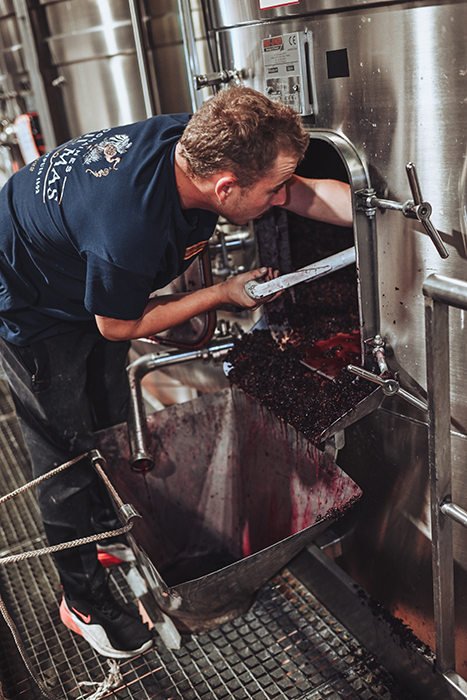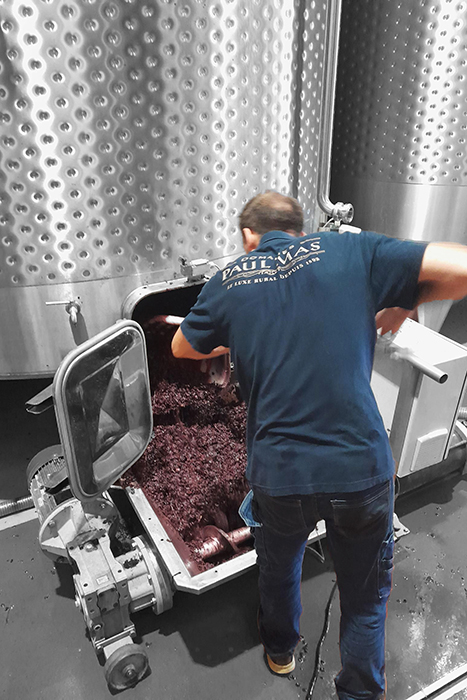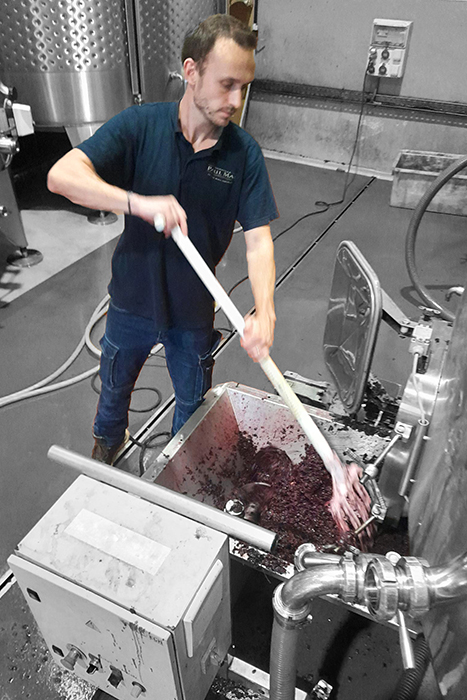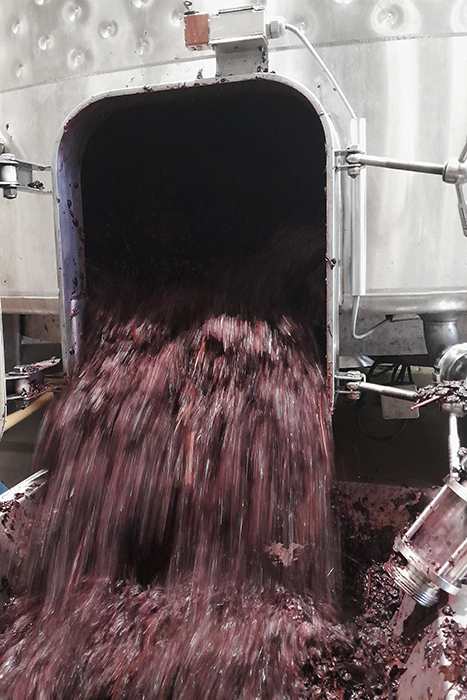Devatting
After weeks of fermentation, the time has come for the wines to leave their vats and either join another one or be put into barrels.
The winemaking process is a complex art that begins with a meticulous harvest of ripe grapes which will evolve into a symphony of flavors in every bottle. The alcoholic fermentation major steps where yeast transforms sugar into alcohol, the journey from juice to wine is marked by expertise and passion. After fermentation, the wine undergoes devatting techniques to separate the solids from the liquid, then is carefully aged in either barrels or vats to reach full maturity. Clarification and bottling follow, sealing the essence of the terroir and the winemaker’s work in every sip.
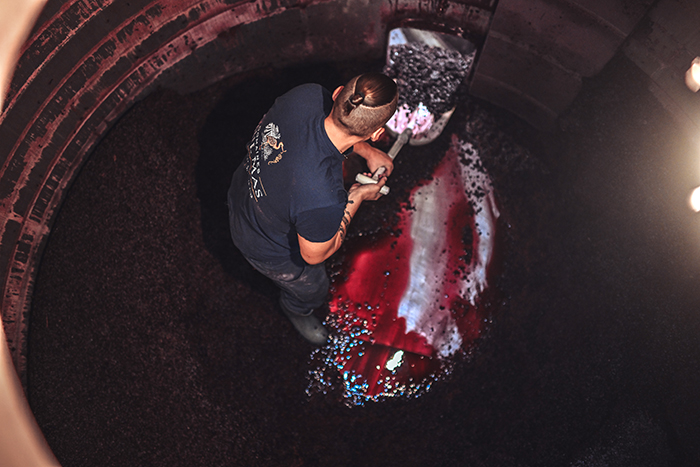
Today, let’s dive into the art of devatting, an essential step in the winemaking process that takes place once the alcoholic fermentation is complete.
How do you know when alcoholic fermentation is complete?
There are several indicators that can be used to determine whether alcoholic fermentation is complete:
REDUCED DENSITY
At the beginning of fermentation, the density of the must is high due to the sugar content. As the yeast consumes the sugar, the density of the must decreases. The cellar master uses an instrument called a densimeter to measure the density of the must. When the density remains stable over several days, fermentation is complete.
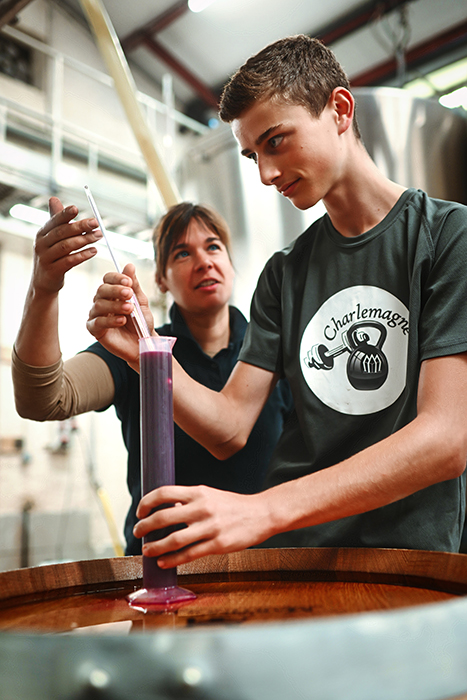
ABSENCE OF BUBBLES
Carbon dioxide bubbles rise to the surface of the must for white and rosé wines, while for red wines, the cap of marc forms and expands, with a change in grape color towards purple, depending on the grape variety. When these carbon dioxide bubbles stop forming, this may indicate that fermentation is about to end or has already finished.
TASTE AND SMELL
Another important indicator is the taste and smell of the must. During fermentation, the must generally tastes sweet. When fermentation is complete, the must tastes “dry” (all the sugars have been converted to alcohol) and an odor characteristic of developing wine.
HEAT
Alcoholic fermentation releases heat. When the temperature of the must gradually drops and stabilizes around room temperature, fermentation is complete.
ANALYSIS
Winemakers perform wine analyses to measure residual sugar content. If the sugar content is close to zero, fermentation is complete.
It’s important for winemakers to keep a close eye on these indicators to ensure that alcoholic fermentation is proceeding correctly, and to decide when it’s time to move on to the next stage of the winemaking process, devatting.
DEVATTING
Over the days, the yeasts have worked their magic, transforming the sugar into alcohol. Devatting is a bit like waking up “sleeping beauty”, after weeks of fermentation, the time has come for the wines to leave their vats.
WHY IS IT SO IMPORTANT TO TRANSFER WINE FROM ONE TANK TO ANOTHER?
In this process, solid residues such as skins and seeds are separated from the must, leaving behind a clearer, purer wine. This is a crucial step in defining the wine’s character and quality. It is when Jean-Claude Mas, his oenologists and winemakers decide on the length of maturation, the type of barrel to be used, and even whether further clarification is required.
WHAT ARE THE STAGES OF DEVATTING?
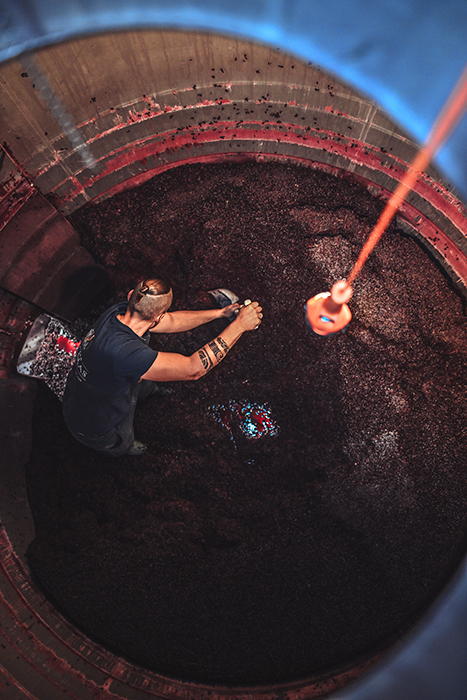
Fermentation control
Before devatting, the winemaker carefully monitors alcoholic fermentation to ensure that it is complete. This is determined by the stability of the wine’s sugar level and density. When these values are stabilized, fermentation is considered complete.
Tank preparation
Fermentation tanks are prepared for devatting. They must be cleaned and sterilized to avoid contamination. The winemaker also decides whether devatting or extend the maceration (when the grapes are of good quality).
Wine transfer
The wine is gently pumped or gravity-fed, then transferred from the fermentation tank to another clean tank. This process separates the wine from solid parts (skins, seeds, etc.).
Pressing the solids
After the wine has been transferred, the solids remaining in the fermentation tank can be gently pressed to extract any remaining liquid. This pressed juice is sometimes added to the wine or stored separately.
Evaluation and tasting
The winemaker values the wine by tasting to ensure optimal quality. Depending on the wine’s aromatic and taste profile, Jean-Claude and his team decide on the next steps.
After devatting, some wines are returned to vats, while others are aged in barrels. This decision is based on various criteria, such as the style of wine Jean-Claude wishes to produce, the characteristics of the vintage and the type of grapes used.
RETURN TO TANK
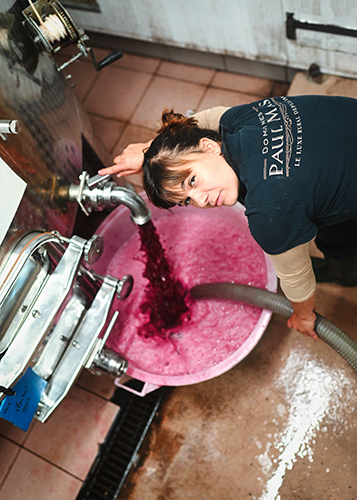
Light, fresh wines
White wines and some light red wines, which are intended to be consumed young, can be returned to vats after devatting. These stainless steel or concrete tanks allow the wine to remain in contact with its lees (the solid particles), which can add aromatic complexity without excessively influencing the wine’s taste.
Controlling freshness
Stainless steel tanks offer precise temperature control, essential to maintain the freshness of white wines and preserving their fruity and floral aromas.
BARREL AGEING
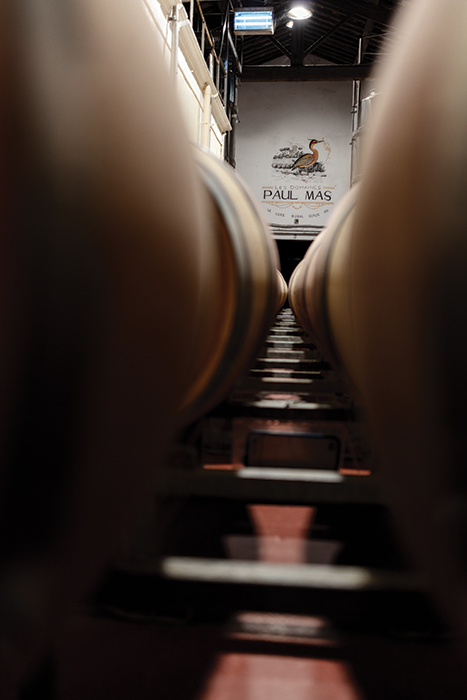
Structured, complex wines
Some wines, particularly reds made from grape varieties such as Cabernet-Sauvignon, Merlot or Pinot Noir, as well as certain white wines, are aged in barrels. Barrels add specific characteristics such as vanilla, coconut and spice aromas, giving it a richer, more complex structure.
Controlled micro-oxygenation
Barrels allow for micro-oxygenation, a slow process of interaction between wine and oxygen through the pores of the wood. This softens the tannins, gives the wine a velvetier texture and contributes to its aging.
Developing the palette of flavors
Barrel aging can accentuate certain characteristics of the wine, such as ripe fruit notes, spices and woody nuances. These qualities can evolve and become more complex over time.
The decision to return to tank or barrel is a delicate one made by Jean-Claude Mas and his team, influenced by his artistic vision of wine and his desire to create a specific wine. Every step in the winemaking process, including this decision, contributes to shaping the unique identity of each wine, offering an infinite diversity of flavors and aromas in the wine world.
Devatting is a captivating chapter in the story of wine. It’s the moment when winemakers, decide the fate of each fermented vat. Between vat and barrel, a vibrant choice where authenticity dances with audacity, where each bottle bears the imprint of art and nature. Throughout every taste, each decision, a story comes to life.
Discover the captivating story behind each bottle of wine, where nature, science, and art meet to create an unforgettable taste experience: follow our news!
